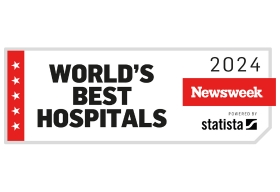Trial details
An International, Seamless Phase II/III Responsive Adaptive Randomization Platform Trial Designed To Evaluate Multiple Regimens In Newly Diagnosed and Recurrent GBM
To find out more about this trial and your cancer treatment options, please speak with your doctor.
Trial short name: GBM AGILE
Official title: An International, Seamless Phase II/III Responsive Adaptive Randomization Platform Trial Designed To Evaluate Multiple Regimens In Newly Diagnosed and Recurrent GBM
Principal Investigator: Dr. James Perry
Cancer type: Central Nervous System
Cancer location: Central Nervous System
Disease stage: Early Cancer
Trial phase: Phase 3
Intervention: Drug: TemozolomideDrug: LomustineDrug: RegorafenibRadiation: RadiationDrug: PaxalisibDrug: VAL-083Drug: VT1021Drug: Troriluzole
Registration #:
NCT03970447 ![]()
Trial description:
GBM AGILE is a biomarker-based, multi-arm trial to investigate the impact of experimental therapies on OS for patients diagnosed with IDH wild-type GBM and is comprised of 2 possible distinct stages for each proposed experimental therapy. The initial Screening stage uses a Bayesian adaptive randomization algorithm to allocate patients to experimental Arms or control based on their disease subtype (defined below) and the accumulating results of the trial. Experimental Arms may “graduate” from the Screening stage if there is evidence of efficacy in at least one of several “biomarker signatures” (defined below). Upon graduations, therapies can continue in GBM AGILE uninterrupted and transition to a confirmatory stage with fixed randomization in an expansion cohort to control type I error intended to support marketing approval. In this manner, GBM AGILE provides an efficient mechanism to screen and develop robust information regarding the efficacy of proposed novel therapeutics and associated biomarkers for GBM and to quickly move therapies and biomarkers into clinic.
Newly Diagnosed Inclusion Criteria: • Age ≥ 18 years. • Histologically confirmed Grade IV GBM, inclusive of gliosarcoma (WHO criteria; IDH wild-type by immunohistochemistry [IHC] or sequencing for IDH) established following either a surgical resection or biopsy. An MRI scan with the required imaging sequences performed within 21 days prior to randomization preferably. The post-operative MRI scan performed within 96 hours of surgery or the MRI scan performed for radiation therapy planning may serve as the MRI scan performed during screening if all required imaging sequences were obtained. • Karnofsky performance status ≥ 60% performed within a 14-day window prior to randomization. • Availability of tumor tissue representative of GBM from definitive surgery or biopsy. Recurrent Inclusion Criteria: • Age ≥ 18 years. • Histologically confirmed Grade IV GBM, inclusive of gliosarcoma (WHO criteria; IDH wild-type by immunohistochemistry [IHC] or sequencing for IDH) at first or second recurrence after initial standard, control or experimental therapy that includes at a minimum radiation therapy (RT). • Evidence of recurrent disease demonstrated by disease progression using slightly modified Response Assessment in Neuro-Oncology (RANO) criteria. • Two scans to confirm progression are required: at least 1 scan at the time of progression and 1 scan prior to the time of progression. • Karnofsky performance status ≥ 70% performed within a 14-day window prior to randomization. • Availability of tumor tissue representative of GBM from initial definitive surgery and/or, recurrent surgery, if performed. Newly Diagnosed Exclusion Criteria: • Received any prior treatment for glioma including: a. Prior prolifeprospan 20 with carmustine wafer. b. Prior intracerebral, intratumoral, or cerebral spinal fluid (CSF) agent. c. Prior radiation treatment for GBM or lower-grade glioma. d. Prior chemotherapy or immunotherapy for GBM or lower-grade glioma. Receiving additional, concurrent, active therapy for GBM outside of the trial. • Extensive leptomeningeal disease. • QTc > 450 msec if male and QTc > 470 msec if female. • History of another malignancy in the previous 2 years, with a disease-free interval of < 2 years. Patients with prior history of in situ cancer or basal or squamous cell skin cancer are eligible. Recurrent Exclusion Criteria: • Early disease progression prior to 3 months (12 weeks) from the completion of RT. • More than 2 prior lines for chemotherapy administration. (NOTE: In the 1st line adjuvant setting, combination of temozolomide (TMZ) with an experimental agent, is considered one line of chemotherapy.) • Received any prior treatment with lomustine, agents part of any of the experimental arms, and bevacizumab or other vascular endothelial growth factor (VEGF) or VEGF receptor-mediated targeted agent. • Any prior treatment with prolifeprospan 20 with carmustine wafer. • Any prior treatment with an intracerebral agent. • Receiving additional, concurrent, active therapy for GBM outside of the trial • Extensive leptomeningeal disease. • QTc > 450 msec if male and QTc > 470 msec if female. • History of another malignancy in the previous 2 years, with a disease-free interval of < 2 years. Patients with prior history of in situ cancer or basal or squamous cell skin cancer are eligible.






